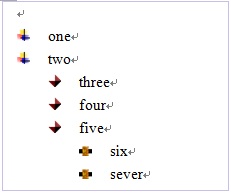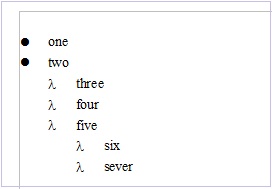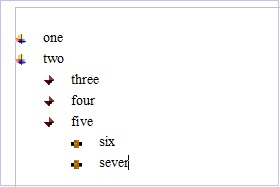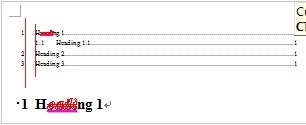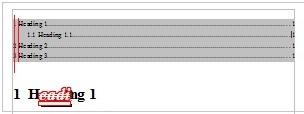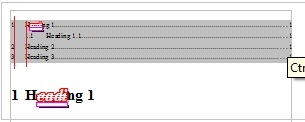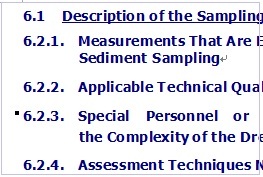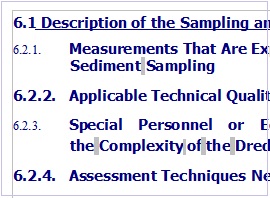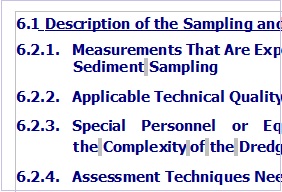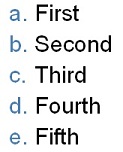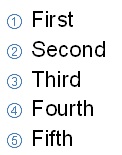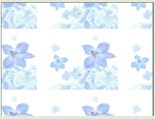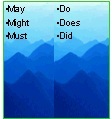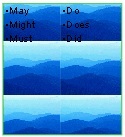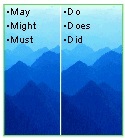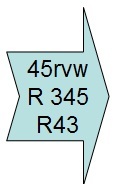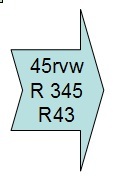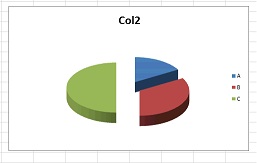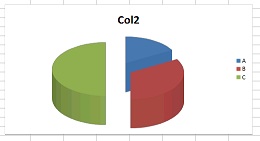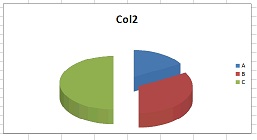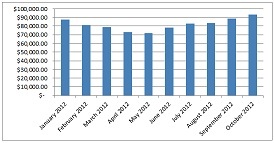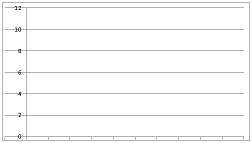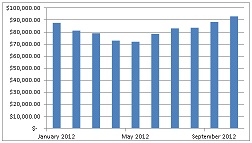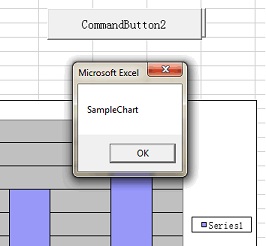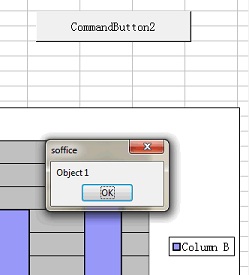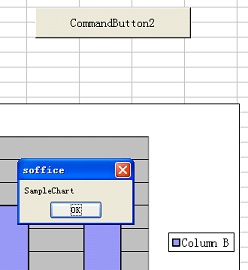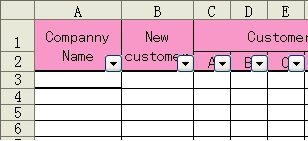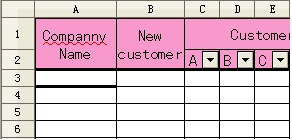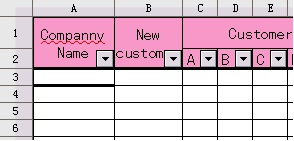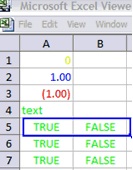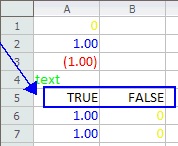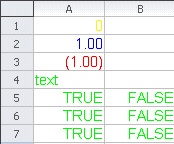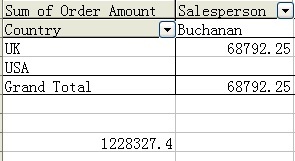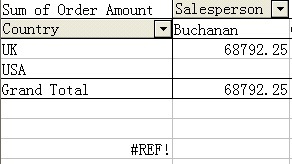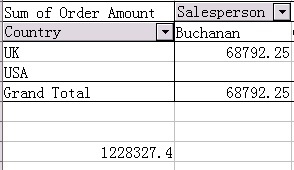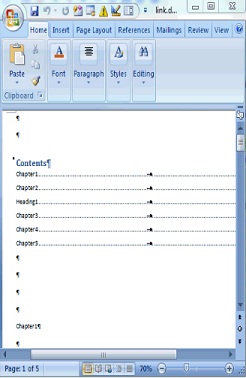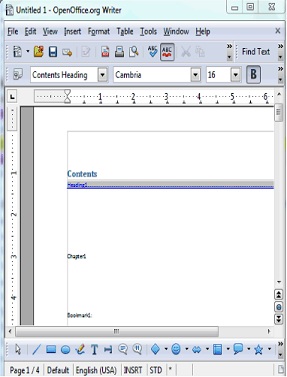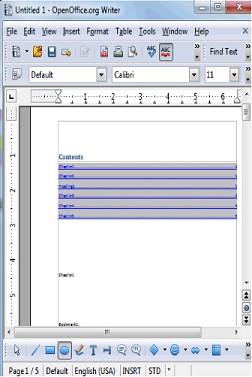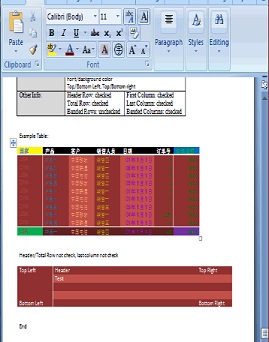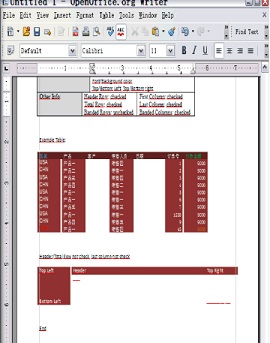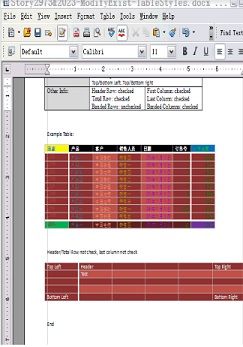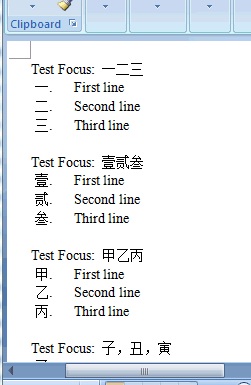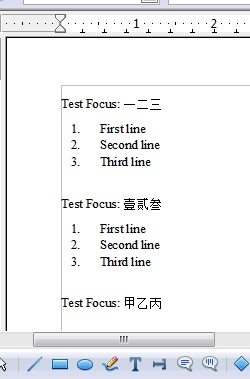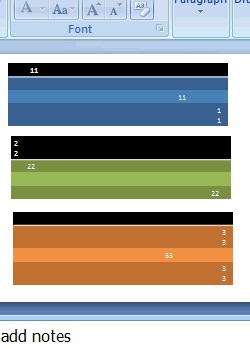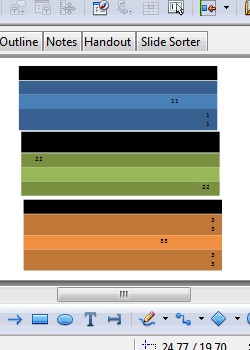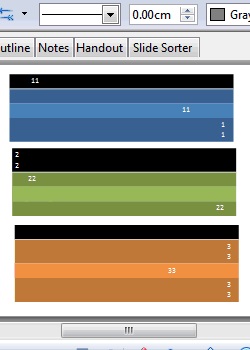Cuestiones xenerales
Apache OpenOffice 4.0 yá ta disponible pa descargar dende la páxina oficial de descarga. Basándose nel gran éxitu de la versión OpenOffice 3.4, que tuvo más de 57 millones de descargues, esti anovamientu principal vien con prestoses carauterístiques nueves, ameyoramientos ya igües d'errores. OpenOffice 4.0 presenta una innovadora interfaz d'usuariu nueva como la Barra llateral, más encontu de llingua pa 22 idiomes (incluyendo 3 nueves llingües), 500 correiciones de fallos, meyor interoperabilidá en Microsoft Office, meyores nos dibuxos/gráficos, un meyor rindimientu, etc. Pue lleer sobre esto con más detalle más alantre nestes Notes de la versión.
Otra cosa más que verá de mou immediatu, nesta páxina, na nuesa web y n'otros llugares, ye'l nuevu logotipu. El nuevu logo ye'l resultáu de munchos ciclos de diseñu, la collaboración ente diseñadores con talentu y un concursu nel que se calificaron 40 logos por más de 50,000 usuarios.
Queremos dar un "hola" especial a los usuarios qu'anueven. Esperamos que-yos gusten les nueves carauterístiques, especialmente la interfaz de Barra llateral. Esta función ta basada en códigu apurríu por IBM, del so productu Lotus Symphony. Adaptamos esi códigu, y basandonos en delles rondes de comentarios d'usuarios como vusté, ameyorámoslu ya integrámoslu n'OpenOffice.
Y los nuevos usuarios, ¡bienllegaos a la comunidá! Esperamos qu'esfruten usando Apache OpenOffice, el paquete líder d'aplicaciones de productividá d'oficina llibre y abiertu.
Como de vezu, prestanos que faiga comentarios:
- Les entrugues d'encontu ye meyor empobinales a los nuesos foros de sofitu comunitariu.
- Los informes d'errores (non les entrugues de sofitu) han dir al nuesu sistema de siguimientu de problemes Bugzilla.
- Les cuestiones xenerales puen unviase tamién a la llista de corréu d'usuarios pública.
Tamién pue alcontranos en Twitter, Facebook y Google+.
Códigu abiertu de la comunidá
N'Apache trabayamos de mou tresparente como una comunidá abierta de voluntarios. Desendolcamos software de códigu abiertu pa beneficiu públicu. Nun vamos pidi-y contribuciones económiques. Pero si tien interés en xunise a nós, p'ayudanos a facer la siguiente gran versión d'OpenOffice, queremos saber de vusté. Nun somos sólo programadores, sinón una comunidá de probadores, diseñadores de la interfaz, diseñadores web, escritores téunicos, espertos n'accesibilidá, traductores, espertos en medios sociales, etc. Son bienveníos los voluntarios en toles árees. Pue alcontrar más información na páxina Get Involved.
Nueves carauterístiques y ameyoramientos
Nueva Barra llateral
La Barra llateral ye una nueva carauterística principal de la interfaz d'usuariu en toles aplicaciones d'OpenOffice.
aplicaciones
La Barra llateral fai meyor usu de les pantalles anches actuales que les barres de ferramientes tradicionales. El panel 'Propiedaes' ye sensible al contestu y amuesa paneles coles propiedaes del documentu que s'usen con más frecuencia na xera d'edición en cursu.
Calque nes imaxes pa una vista con más detalle:
Captures de pantalla de Writer con contestos pa testu, mapa de bits, y formes (d'izquierda a drecha). El nuevu logo d'OpenOffice apegóse como mapa de bits (centru) y como contornos editables (drecha).
Si descubre que de vezu nun usa un determináu panel, faiga click nel títulu y se colapsará a sólo una llinia de testu. Un pequeñu + o - a la izquierda del títulu del panel indica si'l panel ta colapsáu o espandíu.
Diferentes paneles espandíos o colapsaos
- Once paneles de propiedaes migraronse dende IBM Lotus Symphony: Alliniación, Área, Aspeutu de caxella, Gráficu, Llinia, Formatu de númberu, Páxina, Párrafu, Posición y tamañu, Testu y Axuste.
- Siete paneles vienen del antiguu panel de ferramientes d'Impress: Disponible pa usar, Animación personalizada, Diseños, Usaos recientemente, Transición de diapositiva, Diseñu de tabla, Usao nesta presentación.
- Cuatro son diálogos non-modales (que nun bloquien): Funciones, Galería, Navegador, Estilos y Formatu.
- Unu ye nuevu: Inxertar.
Paneles de Symphony, l'antiguu panel de xeres d'Impress, diálogos d'OpenOffice (d'izquierda a drecha).
L'anchu de la Barra llateral pue axustase. Los controles adauten el so tamañu acordies. Si necesita más espaciu pue sacase del panel — y posiblemente movese a un segundu monitor — o pue reducise a una barra de llingüetes delgada. Con un simple click nun iconu volverá la barra llateral.
Distintos anchos de la barra llateral: anchu máximu, anchu predetermináu, demasiao estrechu pa ver el conteníu, colapsáu como barra de llingüetes (d'izquierda a drecha).
Barra llateral flotante, pue movese a una segunda pantalla
Por supuestu, nun puen representase toles funciones d'OpenOffice con controles na Barra llateral. Si necesita una función avanzada sólo faiga click nel botón "más opciones" de la barra del títulu d'un panel p'abrir un diálogu con munches más opciones y propiedaes.
Faiga click en 'más opciones' pa ver, eso, más opciones.
Pue alcontrar más información na wiki d'OpenOffice.
Ameyoramientos na interoperabilidá
L'ameyoramientu de la fidelidá ya interoperabilidá ye un oxetivu continuu pa Apache OpenOffice. Y hai munchos ameyoramientos incluíos na nueva versión. Esti ye un resume d'algunos de los principales ameyoramientos na fidelidá dende'l llanzamientu d'Apache OpenOffice 3.4.1, incluyendo carauterístiques, ameyoramientos y correiciones d'errores.
Documentos de testu
Descripción |
Orixinal |
AOO 3.4.1 |
AOO 4.0 |
|---|---|---|---|
Sofitu pa viñetes gráfiques en MS word 2003 |
|
|
|
Más fidelidá pa la tabla de conteníu con MS Word 2003 (llingüetes, atributos y saltu...) |
|
|
|
Referencia en marcadores a numberación normal |
|
|
Documentos!http://wiki.openoffice.org/w/images/d/d9/120759_Aoo40.jpg! |
Atributos de numberación y viñetes determinaos pola marca de fin de párrafu en MS Word |
|
|
|
Documentos de presentación
Descripción |
Orixinal |
AOO 3.4.1 |
AOO 4.0 |
|---|---|---|---|
Caltener la numberación especial al guardar o abrir un ficheru ppt |
|
|
|
Sofitu pa mosaicu de rellenu especial (el tamañu de la imaxe cubre la páxina maestra), el fondu esportase nel ficheru ppt |
|
|
|
L'atributu de rellenu de fondu gráficu de la tabla pue vese correutamente al cargar el ficheru ppt |
|
|
|
Sofitu pa un conector que ta coneutáu con una tabla PPT |
|
error en AOO 3.4.1 |
|
La flecha con corte a la drecha cola propiedá "Axustar forma al testu" pue importase correutamente |
|
|
|
Caltener los efeutos 3D al importar llinia |
|
|
|
Documentos de fueya de cálculu
Descripción |
Orixinal |
AOO 3.4.1 |
AOO 4.0 |
|---|---|---|---|
Keep Pie chart height when open Excel file |
|
|
|
Support the range specified by a reference formula or name range as chart data |
|
|
|
Show chart name through VBA API by clicking a button |
|
|
|
Support data filter function on merged cells |
|
|
|
Support user-defined format code in xls when cell value is TRUE or FALSE |
|
|
|
Support GETPIVOTDATA in Excel |
|
|
|
Support format code "0_;.00" |
|
|
|
OOXML general
Description |
Original |
AOO 3.4.1 |
AOO 4.0 |
|---|---|---|---|
Support Docx outline level |
|
|
|
Support table background color from table style in docx file |
|
|
|
Support more Numbering&bullet types in docx |
|
|
|
Support font color in table in pptx |
|
|
|
DrawObject Improvements/Enhancements
New Color Palette
The Color Palette is enhanced and extended with a selection of more useful colors, arranged in a new scheme to make finding colors simpler.
The new Palette is a mix of the Lotus Symphony Palette combined with the most useful original colors.
New Gradients
The Gradients are enhanced and extended with new, more useful ones, mainly taken from Lotus Symphony. The old ones are kept, but moved to the end of the list (not in the picture). These Gradients create much nicer fills for uses such as Slide Backgrounds.
New Gallery Themes and Gallery enhancements
Gallery themes added from Symphony.
- Arrows
- Bullets (extended)
- Computers
- Diagrams
- Environment
- Finance
- People
- School & University
- Symbols
- Textshapes
- Transport
Enhancements to existing Gallery
- Old themes are kept and sometimes extended
- Gallery is now able to store and use SVG graphics
- Many new graphics are now in SVG format, which saves space on your computer and gives the user the highest quality vector format
- Ability to add your own SVG and Metafile format graphics
- Can now be oriented horizontally or vertically and will adapt it's layout automatically
- Now also available anytime in the new Sidebar
Refined the Selection Handles User Interface
- Selection Handles were reworked to be more distinguishable.
- Transparency was added to give a slight 'clue' when the Handles cover something, but only for the Handle's fill (not their outlines) to not make them harder to view as necessary.
- The design was slightly rounded.
- Colors were tweaked a little bit for better identification (mainly when Handles are selected).
- When Keyboard-travelling over handles (CTRL-TAB) yellow handles used for CustomShapes now blink as the other handles to visualize the active handle correctly.
Refined Selection Visualization
- For many occasions the selection of objects or multiple objects got enhanced using the selection color from the system.
- Usage and fetching of that system-wide SelectionColor was unified to guarantee it for all selections on all Systems.
- A slight blinking was added to identify objects where text can be added by starting to type or pressing return.
This is used in various places such as; Objects with TextEdit mode, highlighting of objects as Drag&Drop target or object manipulation (dashed black/white lines were used before).
Better Print Preview
The PrintPreview in the Print dialog is now fully AntiAlialised. The previous version was not, thus thin lines could vanish or produce missing parts.
Enhanced conversion to Bitmap Graphics
The conversion to Bitmap graphics is greatly enhanced for all kinds of draw objects, including chart OLEs and others. This is not only useful for internally converting objects to bitmaps, but also used for exports where bitmaps are needed, and the system clipboard. It works with single objects as well as multiple selections. Transparencies of the object and AntiAliasing on its edges are perfect now.
Enhanced FillType 'Bitmap'
All DrawingObjects which can have a Bitmap filling can now profit from the new, greatly enhanced Bitmap FillType:
- The new Bitmap FillType preserves Transparency, the old version was not capable of this and always added a white background.
- It allows the use of vector graphics which stay vector graphic when processed (especially useful in e.g. printing, PDF and other exports).
- It supports SVG and Metafile as FillData, no longer restricted to BitmapData.
- Tiling, AutoFit, Size, Position and Offset settings are fully supported (in Area dialog).
- Animated GIF's are now allowed as FillTypes.
Examples of this include:
- Self-create a scaling-independent fill by drawing anything anytime using DeawObjects
- convert it to Metafile
- create a FillStyle based on it
- Use a SVG or import a vector format (WMF) to define a new FillStyle.
Think about the possibilities for filling the Backgrounds of Pages, Chart bars or other items. This will be used as vector data when printing or at PDF export.
Enhanced Copy/Paste
All applications now support transparent and anti-aliased versions of, for example, DrawObjects in the selection to be exchanged with external applications. This is a result of the enhanced conversion to Bitmap and adding the PNG graphic format to the supported clipboard formats.
Non-Graphic objects are converted on-demand, and graphic objects are copied with full transparency and AntiAliasing support.
It is now possible to Copy/Paste any object to an external PixelGraphic application, modify it as needed, and copy it back to any OpenOffice Application without quality loss. This allows everyone easy and complete image manipulation outside the Office with the tool of his choice and the capabilities he needs.
Enhanced Drag&Drop
Drag&Drop has been enhanced by an 'internal' mode. It is now possible to Drag&Drop anything 'onto' an existing DrawObject to change it's graphic or fill style when holding CTRL+SHIFT (Ctrl+Cmd on Mac) during Drag&Drop.
As visual control, the target object for the Drag&Drop is visualized using the new Selection Visualization and a unique MouseCursor.
- Drag&Drop from external: change FillStyle to Bitmap (including transparence), use e.g. SVG or metafile
- Drag&Drop internal (klick on the source object(s), wait a second until MousePointer changes, start dragging, hold CTRL+SHIFT)
- when source is a DrawObject: Styles are copied (LineStyle, FillStyle, etc.)
- when source is a GraphicObject: FillStyle is adapted to source's geometry content
Here is an example:
(a) Draw an object, e.g. a rounded rectangle with an outline, Draw an arrow object, choose fill and line style for it.
(b) If you Drag&Drop onto the target object, it copies FillStyle and LineStyle.
(c) If you convert the arrow to metafile (e.g. using context menu), Drag&Drop onto the target object, it gets filled with the arrow's vector data.
This comes in very handy if you need to quickly define an object FillStyles or want to copy the GraphicStyles of one object to others.
Also very useful:
- You can use the Gallery as in-betwen space for DrawObjects or GraphicObjects used for that purpose.
- You can directly Drag&Drop from there onto DrawObjects.
- You can Drag&Drop from external sources onto DrawObjects.
Adapt LineStart/End to LineWidth
It is practical when you change the LineWidth of an Object which has ArrowHeads defined at its start/end when the ArrowHeads used get adapted to your LineWidth change; else you have to adapt these by your own. This was already done for Draw and Impress. This is now unified and centralized and works in all OpenOffice applications.
SVG Export enhancements
Some enhancements for SVG export were added to avoid some quality losses. More improvements are planned in this area for future releases.
SVG/Metafile Break improvements
If an imported SVG/metafile is manipulated, it needs to be broken up into DrawObjects. This code was improved in this release. More improvements are planned in this area for future releases.
SVG Import improvements
Enhancements and bug fixes were made in the SVG Import code . Thanks to all Users who were reporting issues and providing test documents for SVG. If you have a SVG file which looks different than it should, do not hesitate to attach it to an issue in the Apache OpenOffice Bugzilla.
Picture Crop mode offers preview
When working on a GraphicObject it is allowed to set a Crop region for it. When using the interactive mode for that, the new version shows the non-visible part of the Graphic content (the croppped part) as transparent and surrounds it with a light border. This way you no longer have to guess where or how big the cropped data is.
This example shows cropping in an SVG graphic:
Unified visualization of ColorPalette popups
All places where a ColorPalette popup is shown (the form where the colors are organized in a raster) are overhauled and made to use the same sizes and width. The width (12 columns) was adapted to the new designed ColorPalette. For a picture see 'New Color Palette'
Transparency support for pixel formats (PNG)
When exporting selected drawing objects to formats that support transparency, e.g., PNG, OpenOffice now uses a transparent background by default. This allows to further use graphics created in other applications or for further processing.
Connectors support rotation
Connectors no longer disable rotation or shear tools when selected. While this is a small benefit with single connectors, it is very useful when selecting a number of graphic objects and wanting to rotate them. This was requested in the OpenOffice Community Forum, where a user wanted to rotate a drawing made of many draw objects and many connectors by 90 degrees. This is now possible without the inconvenience of deselecting all of the connectors.
Corrected Hatch fill style visualization
When zooming out or in small visualizations (e.g. Page Previews) objects or pages using a hatch fill style were poorly visualized since too many hatch lines were shown in a small area. The Hatch Fill Style now uses a minimal line distance to make it look good for visualizations in Edit Views. This was already the case in older office versions, but was lost in the redesign of the visualization.
Better gradient support in metafiles
Gradients in metafiles are rotated and sheared (slanted) together with the metafile and so behave similar to bitmap graphics. Start color and end color are included in those gradients now. This improvement becomes visible if you use a small number of gradient steps. All gradients are now shown in presentation mode the same as they are shown in edit mode.
Calc and Chart Improvements/Enhancements
Support relative Pie Chart Height:
For Pie charts imported from other formats, the Height attribute was not supported. This is added now and makes Pie Charts look more like the original.
New Functions
Calc now supports the spreadsheet functions: AVERAGEIFS, COUNTIFS, and SUMIFS. These functions allow you to combine several conditions.
Calc now supports the function XOR. The function completes the already available set of Boolean functions.
Calc now supports the functions LEFTB, RIGHTB, LENB, and MIDB. These functions are special versions for DBCS (double byte character set) languages.
Calc's RAND function was reimplemented to use the Mersenne-Twister algorithm.
Extensions Improvements/Enhancements
New Toolbar management
Extensions now use a new Toolbar management, see https://issues.apache.org/ooo/show_bug.cgi?id=121577 ; at the moment, Extensions for 3.x that are using the deprecated mechanism will have to be updated to work with OpenOffice 4.0. Many popular extensions, including dictionaries, are not affected by the change.
Unified menu API
The Menu API has been unified, making it more clear and API-user-friendly. The following interfaces have been deprecated and replaced: css.awt.XMenuExtended, css.awt.XMenuExtended2, css.awt.XMenuBarExtended, css.awt.XPopupMenuExtended. See https://issues.apache.org/ooo/show_bug.cgi?id=121542#c2 for details.
Note: extension authors who require more information on the above changes are encouraged to post their questions to our API mailing list.
Performance Improvements/Enhancements
Many resource leaks were fixed.
Many resource leaks were fixed, reducing memory requirements and improving application stability.
Speedup of Graphic Rendering
More Rendering speedups are used (on systems supporting it, system-dependent)
- Bitmaps with transparency are painted directly
- Bitmaps which are transformed (rotated/sheared/mirrored) are painted directly
- Lines with LineWidth and/or transparence are painted directly
- Geometry and Pixel data is buffered in system-dependent formats
For example, this allows even animated GIFs to be used as object fill style for any object and to transform these in real time (when supported on the system). It also greatly enhances visualization geometry during editing (in the EditViews) when supported.
Additional Language Support
New translations available in Apache OpenOffice 4.0 include:
- Greek
- Portuguese
- Tamil
Updated translations include:
- Asturian
- Czech
- German
- British English
- Spanish
- Finnish
- French
- Scottish Gaelic
- Galician
- Hungarian
- Italian
- Japanese
- Korean
- Dutch
- Brazilian Portuguese
- Russian
- Slovak
- Slovenian
- Simplified Chinese
For a complete list of available languages and language packs see this detailed download page.
Note: Several other language translations are in-progress and will be released when available. If your language is not listed above, and you want to help translate the user interface, we welcome any and all volunteers.
Improved Quality Management Tools
New Automated Testing Framework
Apache OpenOffice 4.0 has a new automated testing framework based on JUNIT that tests in the areas
- BVT (Basic Verification Tests)
- FVT (Functional Verification Tests)
- PVT (Performance Verification Tests)
- SVT (System Verifcation Tests)
Changes that Impact Backwards Compatibility
Module binfilter removed
We no longer read or write the legacy StarOffice file formats (files with extensions .sdw, .sdc, .sdd, etc.). Removal of this code makes the OpenOffice codebase easier to maintain. The legacy formats have never been the default format in any version of OpenOffice. Users with legacy StarOffice documents are advised to re-save them into ODF format (.odt, *.ods, *.odp, etc.) *before upgrading to Apache OpenOffice 4.0. This can be done using File - Wizards - Document Converter in OpenOffice 3.x OpenOffice 1.x files (*.sxw, *.sxc, *.sxi) are still supported.
Python support updated
PyUNO is now compatible with the latest C-Python 3.x but in order to reduce the impact for existing applications, support for C-Python 2.x has been preserved and remains the default. The internal Python, used by default in the Windows and MacOS-X ports, has now been upgraded with version 2.7.5 which fixes hundreds of bugs and has important performance improvements but is still compatible with previous versions. Existing scripts may require minor adjustments but will normally just continue working as before.
Support for system C++ STL
The stlport4 template library was obsoleted with the TR1 report of the C++ standard and was deprecated and no longer maintained. Apache OpenOffice 4 switches to the system's native standard template library, so extensions written in C++ need to be recompiled with the Apache OpenOffice 4 SDK.
Bug Fixes
As of July 17th 2013 there were 498 verified issues that have been resolved.
This list can be found at: VERIFIED or CLOSED
(An OpenOffice Bugzilla login will enable you to search for any bugs that may interest you.)
Important bug fixes have been made in these areas:
Support for Java 7, and the Java Access Bridge v2.0.3 implemented in JRE 1.7u6 and later has been restored. Windows OS users requiring Accessibility support for Assistive Technology tools can now use current Oracle releases of the Java SE 7 Runtime Environment and the Java Accessibility API on Windows.
The QA team has been tracking additional fixes as well. See their complete reports at:
http://wiki.services.openoffice.org/wiki/QA/Report/WeeklyReport
Known Issues
- Apache OpenOffice 4.0.0 will be flagged by the new Gatekeeper facility in Mac OS X Mountain Lion. This is a new feature to help guard against malware on Mac systems. There is a procedure laid out at the following link to allow applications not installed from the Mac App store to run. See the article at Mac support at http://support.apple.com/kb/HT5290.
- Apache OpenOffice 4.0.0 supports Java 7, which is the recommended configuration; but (especially on 64-bit Windows) you might receive warnings about the Java version being defective. In that case, download and install the Microsoft Visual C++ 2010 Redistributable Package. If you still have problems, install the most current JRE 6 version. Make sure you get the file "Windows x86 Offline (32-bit)". Then configure OpenOffice to use it at "Tools - Options - OpenOffice - Java". See this forum topic for more information.
- Apache OpenOffice 4.0.0. has got a new color palette. If you have migrated your "personal data" from a previous version, the old color palette is migrated too: you won't see the new palette and (if you are using a non-English version) some of the color names will appear in English only. To get the new palette close Apache OpenOffice and its quickstarter, search for the file “standard.soc” in your Apache OpenOffice user folder and rename the file, to “standard_AOO341.soc” for example. With the next start of Apache OpenOffice the new color palette is transferred to your user folder and is available.
Upgrading/Installation
When installing Apache OpenOffice 4.0.0 on a machine that already has OpenOffice 3.4.1 or 3.4.0 installed on it, the user will be prompted on whether they would like "personal data" from the previous version migrated over to the new version. This includes information like custom spell checking words, dictionaries, extensions, etc. By default this migration is enabled, but the user can disable it via the checkbox.
In some cases, when the user first launches Apache OpenOffice 4.0 after an upgrade that included personal data migration, the user will see a dialog like this:
It is safe to click OK on this dialog.
After an upgrade is completed, there may be some files related to the older version of OpenOffice still on your machine. These can be safely deleted:
- The empty directory: C:\Program Files\OpenOffice.org 3\share\uno_packages\cache\uno_packages
- Install files directories from previous versions, often on your Desktop, with names like:
- OpenOffice.org 3.4.1 (en-US) Installation Files
- OpenOffice.org 3.4 (en-US) Installation Files
- OpenOffice.org 3.3 (en-US) Installation Files
For additional upgrade/installation information, please see the Install Guide.
Stay informed about Apache OpenOffice
You are encouraged to subscribe to the Apache OpenOffice announcement mailing list, to be receive important notifications such as product updates and security patches. To subscribe you can send an email to: announce-subscribe@openoffice.apache.org.
You can also follow the project on Twitter, Facebook and Google+.









